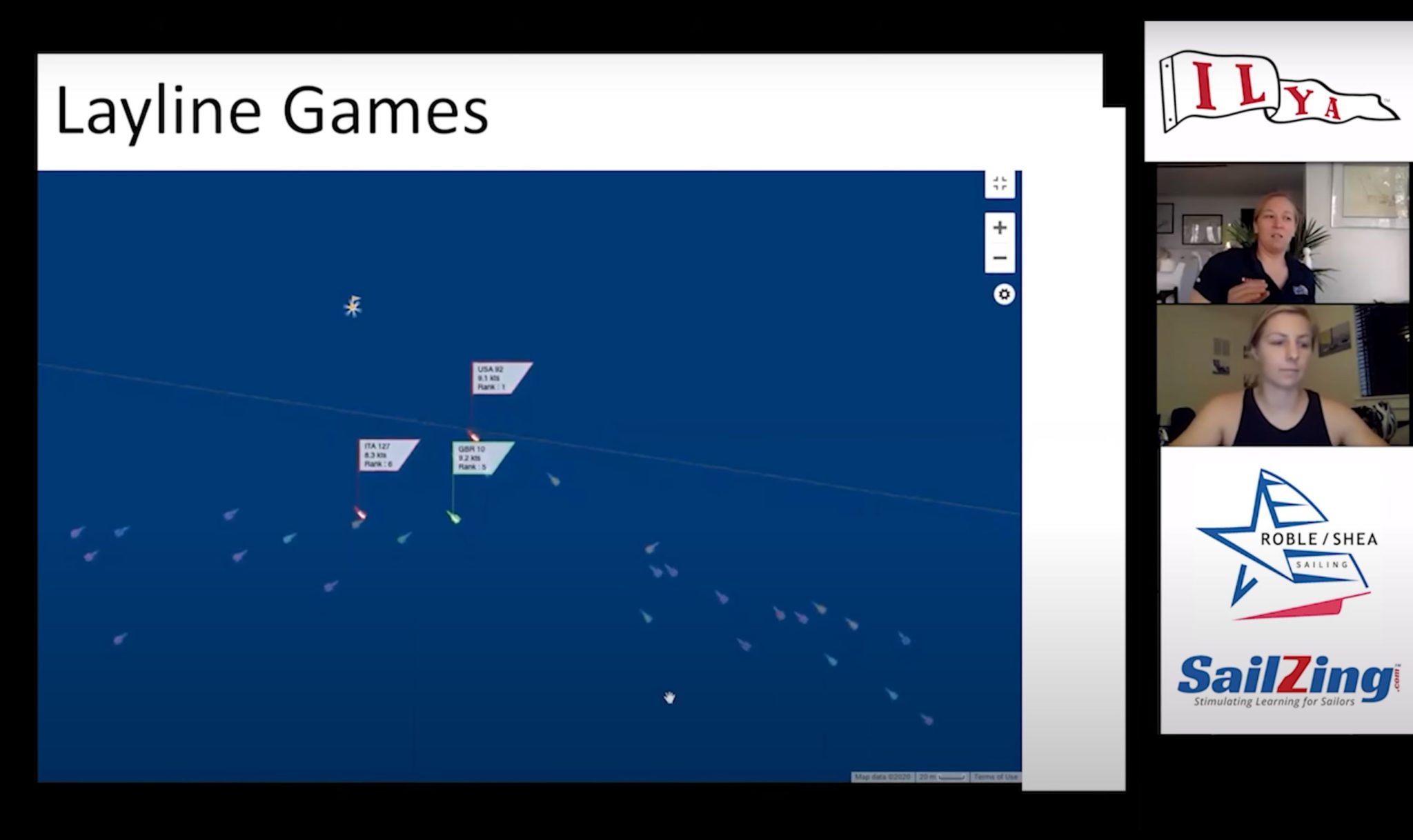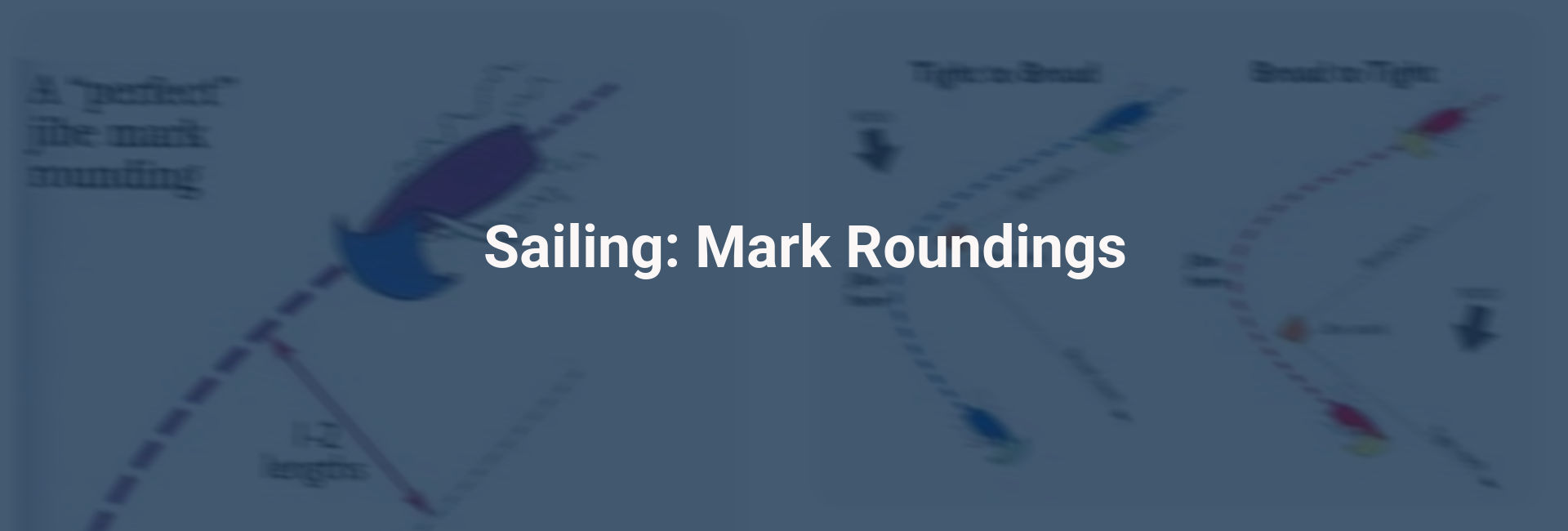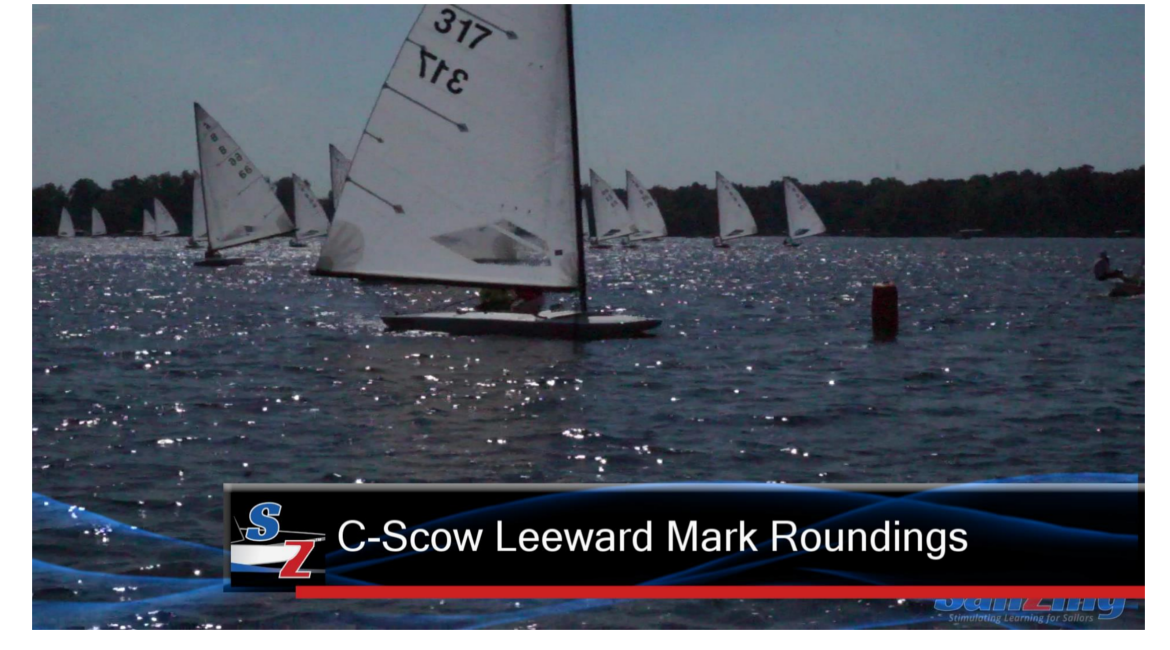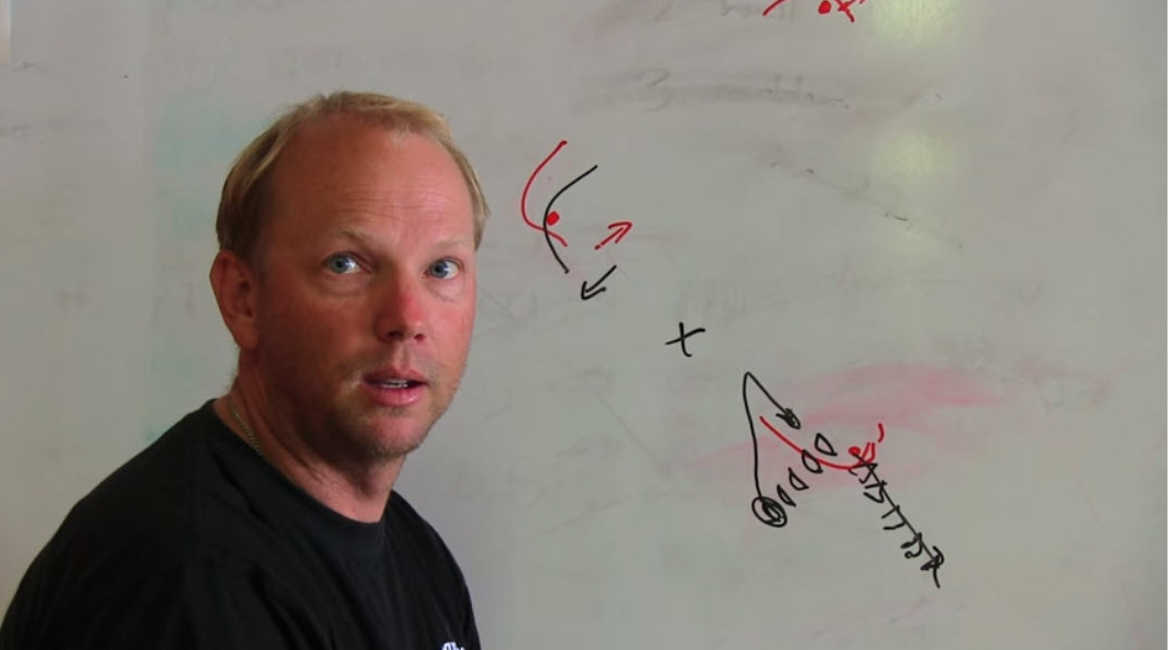How many times have you been burned at the windward mark, losing multiple places in less than a minute? It’s easy to do, since there are so many traps to avoid. For this post, we collected the available wisdom on how to plan for the windward mark approach.
Our sources for this post include:
Upwind Tactics With Roble / Shea Sailing – ILYA Fast Forward Series
Smart Moves Near the Laylines, by David Dellenbaugh – Sailing Breezes
Weather Mark Tactics, by Ed Baird – Sailing World
Performance Racing Tactics – North U – Bill Galdstone
Video Excerpt: Layline Games – Roble / Shea Sailing
In this excerpt from Upwind Tactics, Steph and Maggie discuss the windward mark approach and then use a GPS tracking example from the 49er FX worlds, to show how the ITA boat loses 3-4 places by getting to the layline too soon. They also discuss “corner plays” – showing the best lanes to approach the windward mark from the left and the right.
Windward Mark Approach Traps
#1. Get to the layline too early
This is the most common trap and the easiest to avoid. We covered this briefly in our post Windward Mark Laylines: Get them Right, but it’s worth expanding on.
The layline defines the close-hauled course you would sail to fetch the windward mark. It rarely pays to sail past the layline, since you will sail extra distance.
Laylines change every time the wind changes.
- A wind shift moves both laylines, rotating them in the direction of the shift.
- A velocity change either narrows the laylines (wind increase) or widens them (wind decrease).
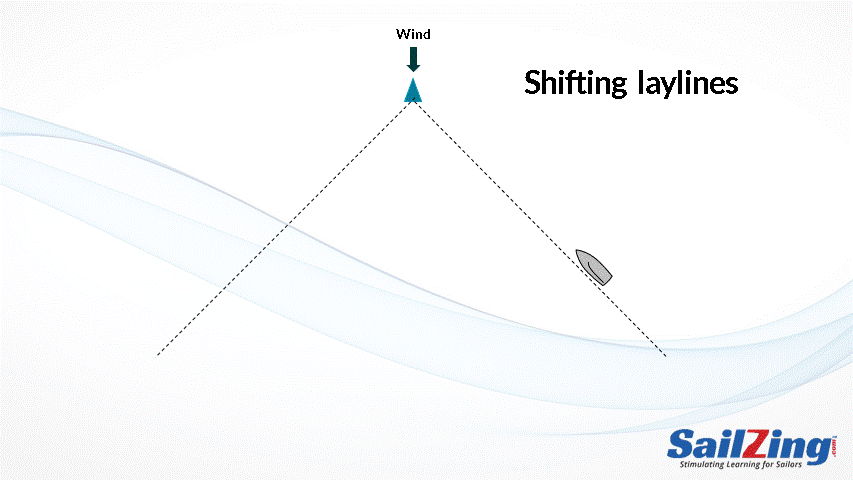
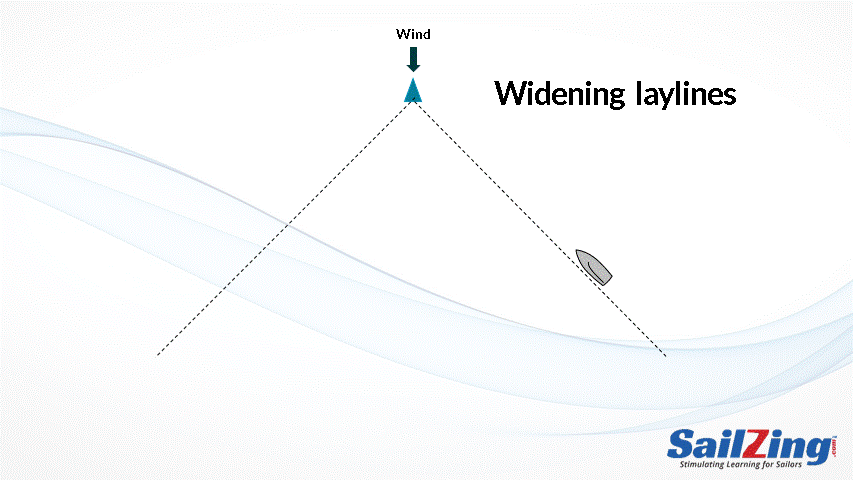
Recognize that, if you’re on the layline, you will lose ground in any wind change. A lift or velocity increase will put you above the layline and you will have sailed extra distance. A wind decrease or header will put you below the layline and force you to make two extra tacks.
To avoid this trap:
Don’t plan to get to the layline until you’re less than about 10 – 15 boat lengths from the mark. This is a maximum distance to plan for. If it’s shifty or puffy, wait until you’re even closer to the mark.
#2. Sail in bad air
You can expect bad air at the windward mark, especially in a big fleet. The worst sources are:
- Layline parade and “fan.” As boats pile up on the layline, they tend to overstand in order to keep clear air.
- Blob between laylines. If boats have rounded the mark and are sailing between the mark and the offset, there is a “blob” of bad air between the marks.

To avoid these traps:
Don’t get to the layline too early. Find a clear lane that is several boat lengths short of the layline. Sail this lane until you get closer to the three-boat-length zone. This way, you’ll sail faster than the boats in the layline parade, many of whom are also overstanding to get clear air.
If you’re on the left side of the course and behind, you’ll likely encounter the “blob” as you cross the middle near the mark. Better to cross over early if this is the case.
#3. Getting tacked on
Once you’re on the layline, other boats can tack ahead, slowing you down. In the extreme case, you might have trouble fetching the mark.

To avoid this trap:
Don’t get to the layline too early. (Is this beginning to sound familiar?) This leaves too many opportunities for boats coming in on port. If you have to go early and there are potential challengers, go a little past the layline before tacking. This will give you a cushion to foot off for speed. Championship Tactics describes two ways to use this cushion:
- You can bear off a little to encourage boats on port to cross behind you.
- You can also bear off to roll over boats that tacked to leeward of you and are going slow.
#4. On port in the zone
Approaching the windward mark on port is often a good way to keep clear air. This is especially true if you don’t have to avoid too many boats that are rounding the mark and have to deal with the blob of bad air between the laylines. However, tacking in the zone as you reach the starboard layline is risky – see Rule 18.3. This is especially true in traffic. A foul here will be hard to recover from.

To avoid this trap:
Approach on port outside of the three-boat-length zone.
#5. Short of the layline in traffic
Ed Baird discusses this painful situation in Weather Mark Tactics. You’re on the layline with no margin to spare, and you get a lull or header. There’s traffic behind and to windward. If you can’t use some speed to shoot up to the mark, you’ll have to make two tacks to recover.

To avoid this trap:
This yet another reason to avoid the layline early – it’s too hard to accurately judge from a distance. Here are some tips to avoid or recover from this situation.
- If you’re unsure of your layline call, overstand by a boat length. This gives you margin.
- If it becomes apparent you won’t make the mark, Ed points out that it pays to deal with this situation sooner rather than later. The closer you get to the mark, the harder it will be to make two tacks without fouling someone.
#6. Weak tactical position
As you approach the laylines, you want to have choices. Often, however, you’re in a weak tactical position, with other boats controlling you. Here are three weak positions to avoid:
Port tack in traffic

You’re below the layline facing a long line of starboard tackers, with no gap. This is rare, because you can usually find a gap to sail through. However, if you’re approaching the mark in a huge crowd, it might be better to get to the layline earlier and overstand a little, rather than take chances.
Pinned

Boats on your weather quarter prevent you from tacking. To avoid this, try to anticipate crossing situations and don’t let the other boat end up to windward of you. Cross if you can, or do a preventive duck – aim at the boat’s midships and duck with speed at the last minute.
Vulnerable

On the layline, you’re vulnerable to port traffic that can tack on your air. To avoid this, either overstand slightly, or position yourself to have a blocker – another starboard boat to leeward.
Best Lanes to Approach the Mark
At 03:38 in the video, Roble/Shea show the best lanes to approach the mark from the left and right corners. We summarized this discussion this discussion on our post Upwind Tactics with Roble / Shea Sailing.
In summary, the diagram below shows the best approaches to the mark. Sail in a lane of clear air and then tack on the layline no more than 5-10 boat lengths from the mark.

Windward Mark Rounding – Make Gains with Technique
Windward Mark Laylines: Get them Right
Racing Rules of Sailing 2017-2020: Rule 18 – Mark Room – Part 1 of 2
Racing Rules of Sailing 2017-2020: Rule 18 – Mark Room – Part 2 of 2

